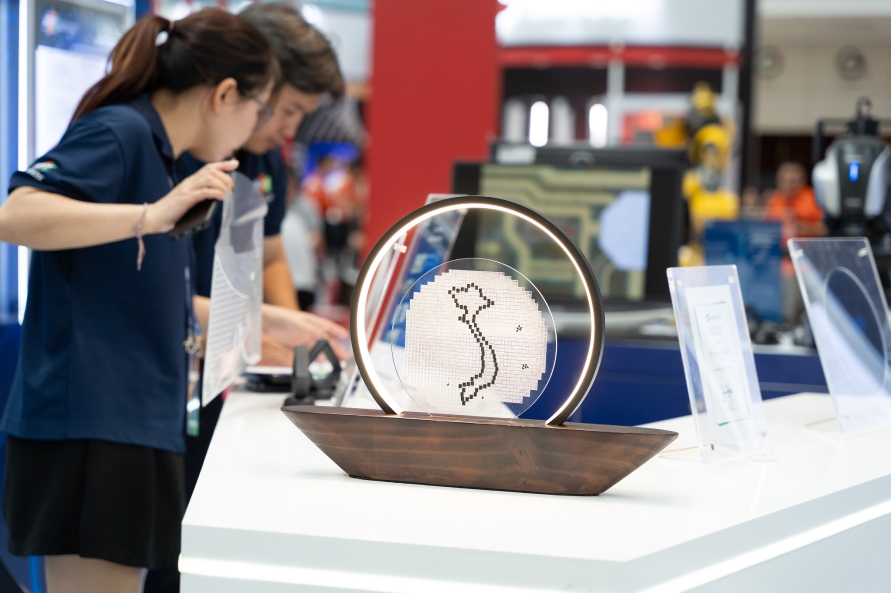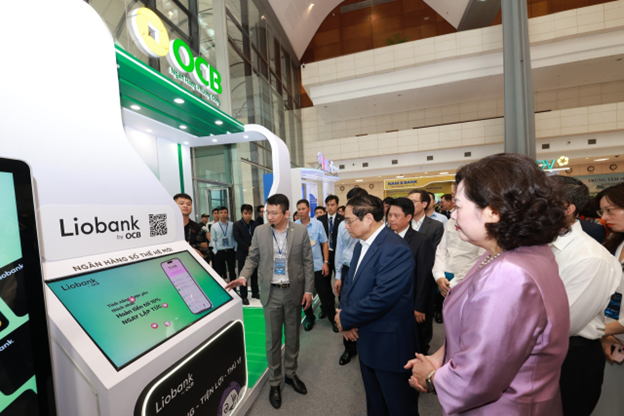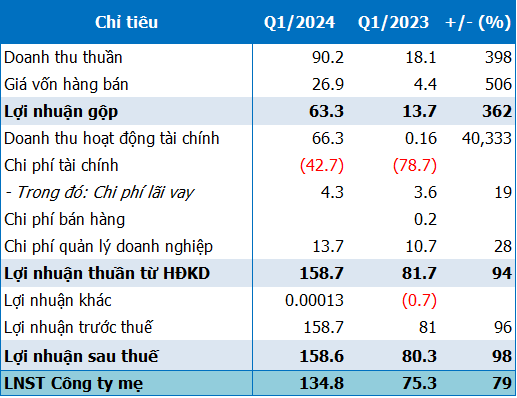In the 2000s, the semiconductor industry emerged as a new high-tech industry in Vietnam, with the presence of technology giants such as Intel and Samsung. Subsequently, many foreign companies followed suit by setting up offices in Vietnam and collaborating with universities to train personnel. The first Microchip Design Research Center was also established at the National University of Ho Chi Minh City in 2005.

The semiconductor industry has appeared in Vietnam since the 2000s (Photo: Vân Anh)
Two decades of familiarity with the semiconductor industry
Semiconductors, tiny pieces of silicon that act as “switches” for the flow of electricity in electronic devices, from small ones like phones and computers to refrigerators and cars… It is considered the most important component in all products. The semiconductor industry has become the “backbone” for the development of the technological era, the core of the digital transformation process.
After nearly 20 years, Vietnam is preparing for a new wave of semiconductor investment as it establishes a comprehensive strategic partnership with the US, the world’s leading high-tech country.
According to a report by the Ministry of Information and Communications (MIC), “Made in Vietnam” chips accounted for more than 10% of imports into the US over 12 months, as of February 2023. Revenue this month increased by 75% compared to the same period last year, reaching 562 million USD. In Asia, Vietnam ranks behind only Malaysia and Taiwan in terms of chip exports to the US.
However, the majority of these export results come from the investments of foreign businesses, especially the Intel Group with a 1 billion USD project in Ho Chi Minh City’s Hi-Tech Park since 2006. In 2021 alone, Intel’s factory produced and distributed 3 billion semiconductor products worldwide, making a significant contribution to the export revenue of Ho Chi Minh City.
There are also other multinational corporations from the US, South Korea, etc. Among them is the technology giant Samsung, which has been present in Vietnam for nearly two decades and has also started to include chip packaging technology in its activities here.
Some other FDI companies, although they bring less investment capital, focus on the “intellectual” segment, i.e. chip design, and have carried out some research and development (R&D) activities, connecting with domestic research institutions and universities for initial human resource training. There are about 40 such companies, including well-known names such as Qualcomm, Texas Instruments, SK Hynix, Hayward Quartz Technology, Synopsys…
These signals send a clear message: Vietnam is gradually being positively evaluated as one of the choices for developing the value chain of high-tech industries such as semiconductors. According to a report by Technavio, Vietnam’s semiconductor industry is estimated to reach 6.16 billion USD by 2024.
Niche that needs to be exploited but also self-enhanced
Experts evaluate that the potential for developing the value of high-tech industries, including semiconductors and microchips in Vietnam, is a realistic and promising prospect, but cannot depend too much or overly expect foreign-invested businesses (FDI).

Associate Professor Dr. Nguyen Duc Minh, Head of the Electronics Department, Hanoi University of Technology
Associate Professor Dr. Nguyen Duc Minh, Head of the Electronics Department, Hanoi University of Technology, believes that FDI companies come to Vietnam for their own benefits. In order to develop a sustainable and long-term semiconductor industry, Vietnam must find ways to develop its own domestic companies as well.
“Looking deeply into the current situation of FDI companies, they are implementing the lighter stages of the semiconductor value chain in Vietnam, which are packaging and design, not chip production. Design can almost be completely digitized, as long as there is a team with good personnel. Design companies can be very fast in entering but also very fast in leaving because they do not have to invest too much outside of computers and software,” analyzed Associate Professor Dr. Nguyen Duc Minh.
“We should not rely too much on FDI. Of course, when they come in, they will enhance their own human capacity, and their investment also costs money, but it is very difficult to transfer technology. Domestic businesses must try to walk on their own. Only then can we be self-reliant and self-reliant in the long term,” added Associate Professor Dr. Nguyen Duc Minh.
Reality also shows that Vietnamese companies find it very difficult to enter as suppliers for the manufacturing and packaging plants of FDI companies. These international companies, multinational corporations make many demands and almost always bring their existing supply partners from abroad.
According to Professor Dr. Tran Xuan Hoai, Vietnam Academy of Science and Technology, Vietnam can learn from the experience of Malaysia.

Professor Dr. Tran Xuan Hoai, Vietnam Academy of Science and Technology
“Malaysia has a complete semiconductor manufacturing ecosystem with domestic businesses handling all stages from design, manufacturing to chip assembly and testing. Meanwhile, in Vietnam, companies such as Intel and Samsung, despite being present for nearly two decades, have revealed that there are no domestic companies that directly supply materials for chip assembly and packaging stages,” stated Professor Dr. Tran Xuan Hoai.
“Clearly, if we want to establish a symbiotic relationship with leading semiconductor companies, Vietnamese businesses should forget about low-productivity tasks such as supplying materials and focus on high-tech gray tasks. This may fall into very narrow segments,” analyzed Professor Dr. Tran Xuan Hoai.
Professor Dr. Tran Xuan Hoai also mentioned that in the US, such supporting companies are very common in the industry with a labor force of 10-15 people. According to Professor Dr. Tran Xuan Hoai, some groups in Vietnam can do it. And if done well, they can exploit countless orders from FDI businesses or be acquired.
Mr. Nguyen Thien Nghia, Deputy Director General in charge of the Department of Information Technology Industry, Ministry of Information and Communications, who also participated in the drafting of the Semiconductor Industry Development Strategy, also believes that Vietnam can focus on specialized chip production instead of competing with the world’s most advanced premium chips.
According to the semiconductor industry strategy, Vietnam is expected to concurrently develop both attracting FDI businesses and improving domestic capabilities.
“We don’t necessarily have to have products right away, but we can walk alongside, participate in the ecosystem of large companies, and focus on the low and mid-range segments where we have the best price competitiveness,” said Mr. Nguyen Thien Nghia.
After two decades, Vietnam is once again facing the opportunity to accelerate in the race. During their diplomatic visits in 2023, both the US and Japan raised the issue of cooperation and support for Vietnam in semiconductor production. In the first half of December 2023 alone, John Neffeur, Chairman of the US Semiconductor Industry Association, and then Jensen Huang, CEO of Nvidia – the world’s largest chip company by market capitalization, visited Hanoi with a shared high evaluation of Vietnam’s potential.











































